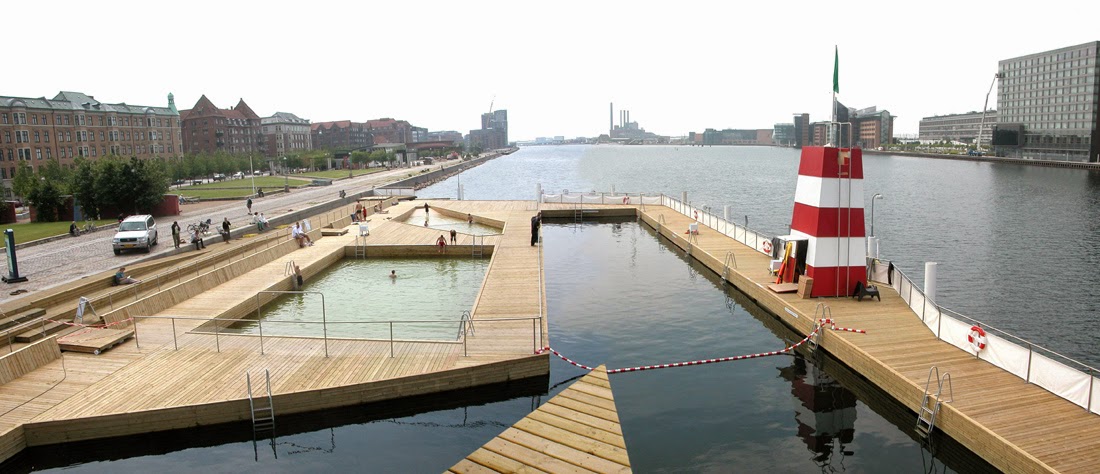Projective Architecture
The Harbor Pools and Winter Baths
by BIG represent a play on the term hot and cold architecture in that the
design of the pools provide an active public space of definitive areas that results in relaxation and a mixing of the users. The juxtaposition of hot and cold is also
evident in the temperature of the various areas as the cold harbor water
contrasts with the warmth of the enclosed thermal baths. The project also represents a form of
hedonistic sustainability by utilizing the existing harbor water to provide a
place of leisure and recreation showing that sustainable practices do not
always need to be difficult or uncomfortable.
The Danish National Maritime Museum by BIG represents a combination of both Hot and Cool architecture as described by Somol and Witing. The building is Hot in that it has a distinct prioritization of definition, by utilizing and framing the existing structure of the drydock, and spanning it with multi use bridges, which make the construction readable. The building is cool, because from the exterior, the majority of the building which is a simple rectangle is hidden underground, requiring the context and viewer to complete the picture by entering below. By sinking the plan into the ground, the museum also respects the adjacent exiting UNESCO World Heritage site.
The Copenhagen Waste to Energy Plant designed by BIG represents
Bjarke Ingels concept of hedonistic sustainability, and approaches the
necessities of society that are often viewed as unapproachable and unclean by
integrating a ski slope which is intended to draw the public to the powerplant. Rather than continuously releasing burnt
fossil fuel co2 emissions the plant will address Denmarks waste disposal
limitations by burning, filtering, and exhausting it in smoke/steam rings which
are meant to bring awareness to the issue, as each ring emits 1 ton of
C02. While the plant scheduled for 2017
completion, will run more efficiently and clean, it will also provide a
hedonistic sense of leisure bringing recreation to the public with the rooftop
ski slopes and hiking trails.
Bjarke Ingels described how the machine, or modern
engineering, has removed the necessity for architecture to respond to its site
and climate, by relying on inefficient means of heating and cooling, artificial
lighting, and power creating a culture of consumption in which regional
vernacular that responds to its environment through passive means has been
largely disregarded in practice. This
has resulted in a simple construction that does not embrace or reflect local
climate, culture, and the resulting architectural vernacular, but rather an unresponsive
box that looks identical on any site worldwide.







Comments
Post a Comment